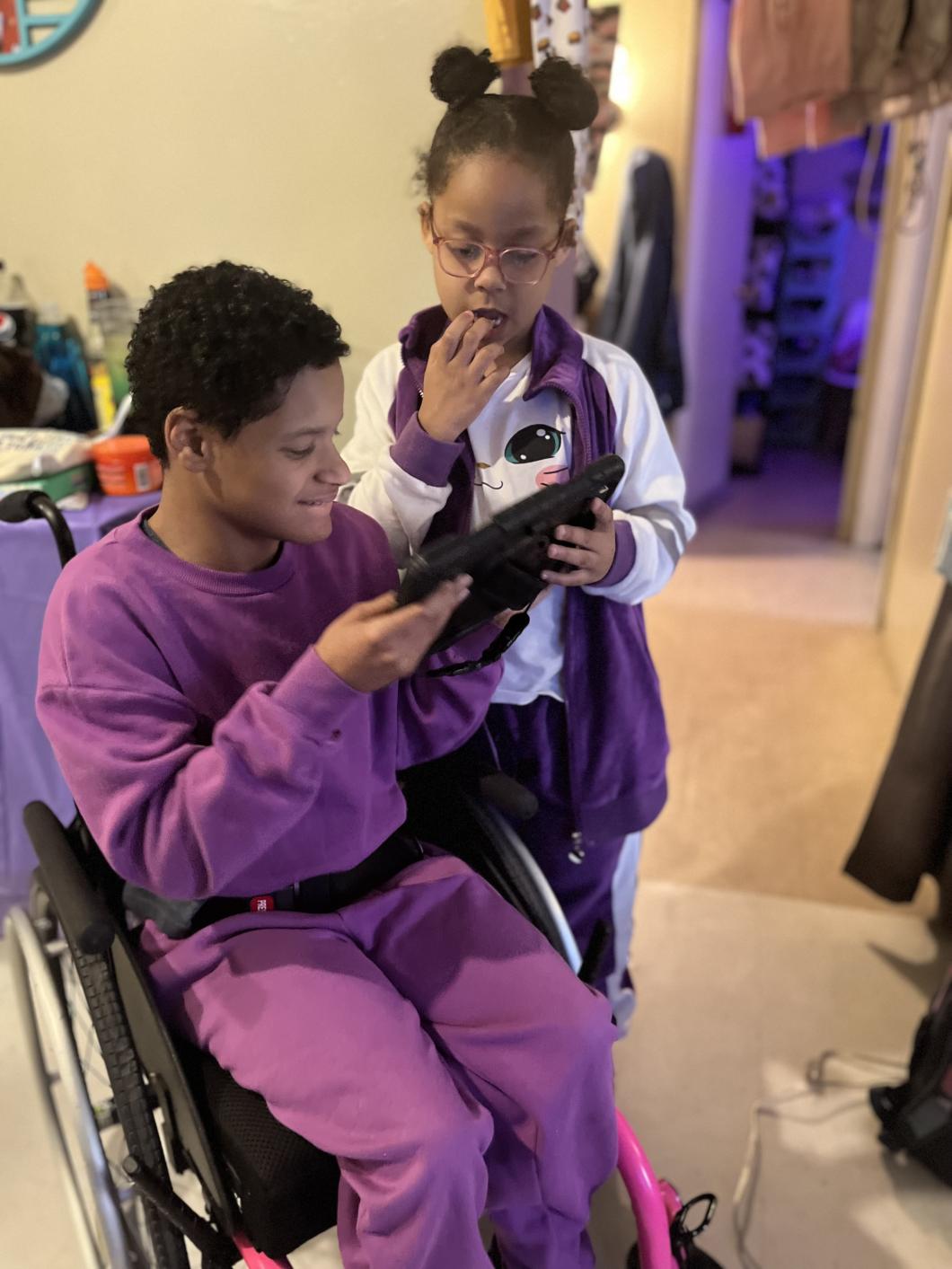Share
Carmine Cammarata, a YAI Person Centered Technology Specialist, showed Mia Simpson in an initial video chat how to control the lights in her room using Google's voice activation system and smart bulbs. The 14-year-old's face lit up with excitement as she realized the possibilities of this new technology.
“For every aspect of Mia’s life, she depends on someone else. The ability to turn on and off the lights by herself has been game-changing, and it’s a huge part of her life she gets to control that she didn’t before,” said Yuvania Espino, Simpson’s mother.
As technology is increasingly a part of everyday lives, smart devices can assist with augmentative and alternative communication, provide access to information and entertainment, and help people with intellectual and developmental disabilities (I/DD) realize personal goals.
Simpson, who uses a limited number of words to communicate, has been working with Cammarata since 2020 and today can navigate her day-to-day school and home activities with the help of her iPad that she also uses as a communication device.
“Mia travels on the bus for school and gets high anxiety when she hears car horns or traffic, and the iPad helps with self-regulation,” said Espino. “She can pull up her favorite songs and point to the faces that are depicting a specific emotion she is having so her paraprofessional is aware.”

Medical appointments are also easier thanks to her iPad. Simpson feels safer now that she can communicate more effectively, giving her greater control of what happens during the visits.
“From having Mia rely on us for complete care, to having little aspects of her life she can control, has made me so proud of her and optimistic of the future and all the things she can possibly do,” said Espino.
Simpson, who has epilepsy and mostly uses a wheelchair to get around, is one of more than 150 people supported by YAI’s Center for Innovation and Engagement. The center has matched with adaptive technology that has empowered them to improve their quality of life.
The Center for Innovation and Engagement focuses on four main areas when connecting people with I/DD to technology:
-
Home – environmental control devices for those with limited mobility to control doors, lighting, temperature, and electronics.
-
Safety – assistance for the medically fragile to address risks from falling, wandering, cooking, and medication management.
-
Health – devices that monitor heart rate, calories burned, steps walked, blood pressure, and exercise customizable to individual needs.
-
Community – access to online learning, travel, music, game-playing, and finance.
“The great thing about tech is that it’s so customizable to whatever your level of need is, and it brings the tools to the people and meets them where they are currently at,” said Cammarata. “Despite having a disability, you deserve to have access to the same tools everyone else has.”
Simpson worked with Cammarata for a year before she was paired with her iPad and smart lights. In addition to that Simpson was also recently equipped with an Embrace 2 smartwatch to help detect her seizures. It is the only FDA-approved epilepsy watch that’s currently on the market. Simpson’s family hopes the watch will make a difference in alerting them right as she is having a seizure and providing round-the-clock monitoring.
Simpson isn’t the only child to benefit from smart technology—the Center is working with students at Manhattan Star Academy and iHOPE, YAI’s two affiliate schools, to match children with tech that can support their independence and transition to young adulthood.
According to a 2021 study, technology resources that support students with disabilities are becoming more available, but classroom use still lags. It is estimated that only between 25 and 35 percent of students with learning disabilities are provided with assistive technology to support their instruction and learning. Furthermore, a national survey of 400 teachers who instruct students with visual impairments found that less than one-third of their students had ever had an assistive technology assessment.
Simpson will continue to work with Cammarata and her smartwatch to get comfortable wearing it and keeping it on throughout the whole day. In the meantime, she has mastered using her iPad to control the lights and recently came to her mother’s assistance.
“Her lights were dim purple one day when I was in her room and looking for something, and she realized I was having a hard time seeing, so she told Alexa to make the lights brighter,” said Espino. “She realized I needed help and was able to use her lights appropriately...that was really amazing to witness.”
For Cammarata, supporting someone’s progress with technology requires a hands-on approach while also building their self-confidence.
“I try to encourage the people we support to independently work with their tech as much as they can,” said Cammarata. “You can explain tech to someone, but actually showing it to them, it really clicks, and I think for Mia, it did just that.”

